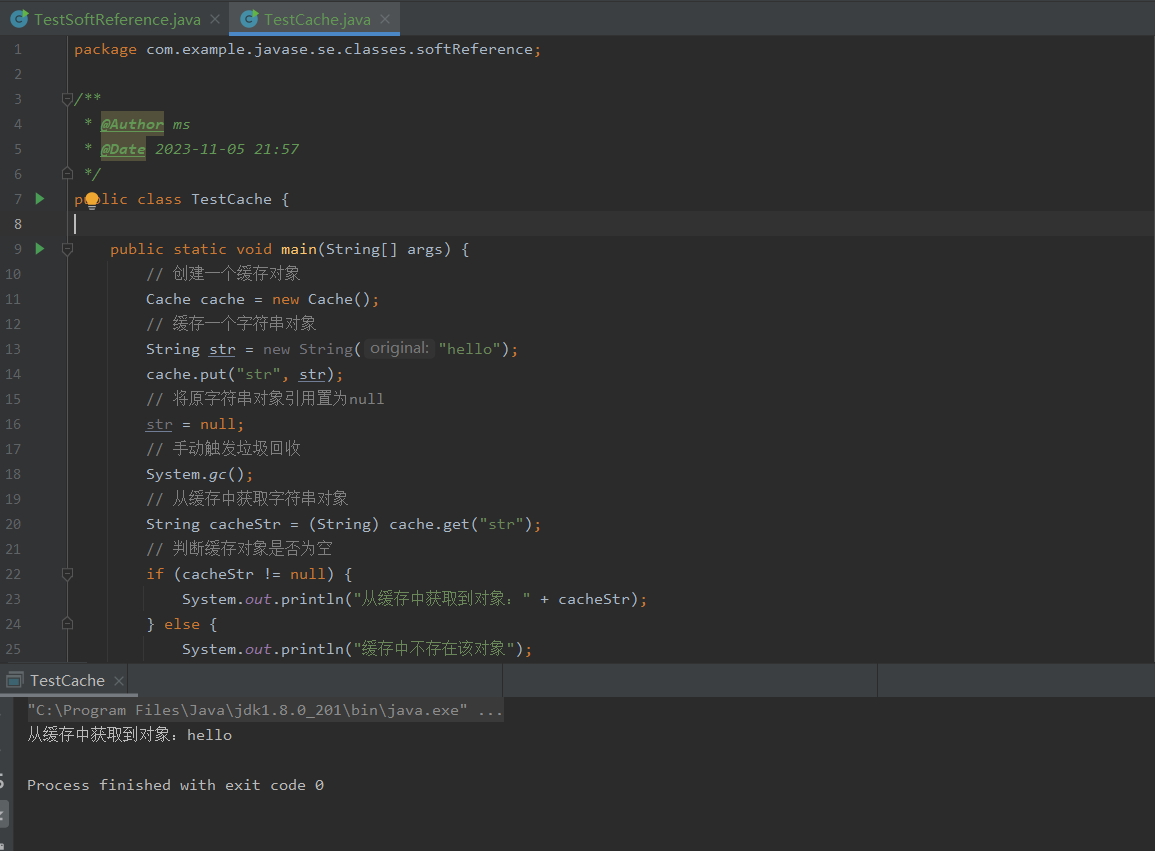软件版本
IntelliJ IDEA:2023.2
JDK:17
Tomcat:10.1.11
Maven:3.9.3
技术栈
- servlet
- 谷歌的:zxing
- 生成普通的黑白二维码
- 在二维码中间添加一个小图标
- github开源项目:qrcode
- qrcode开源项目的内部是基于zxing实现的,可以让二维码更加酷炫
项目结构
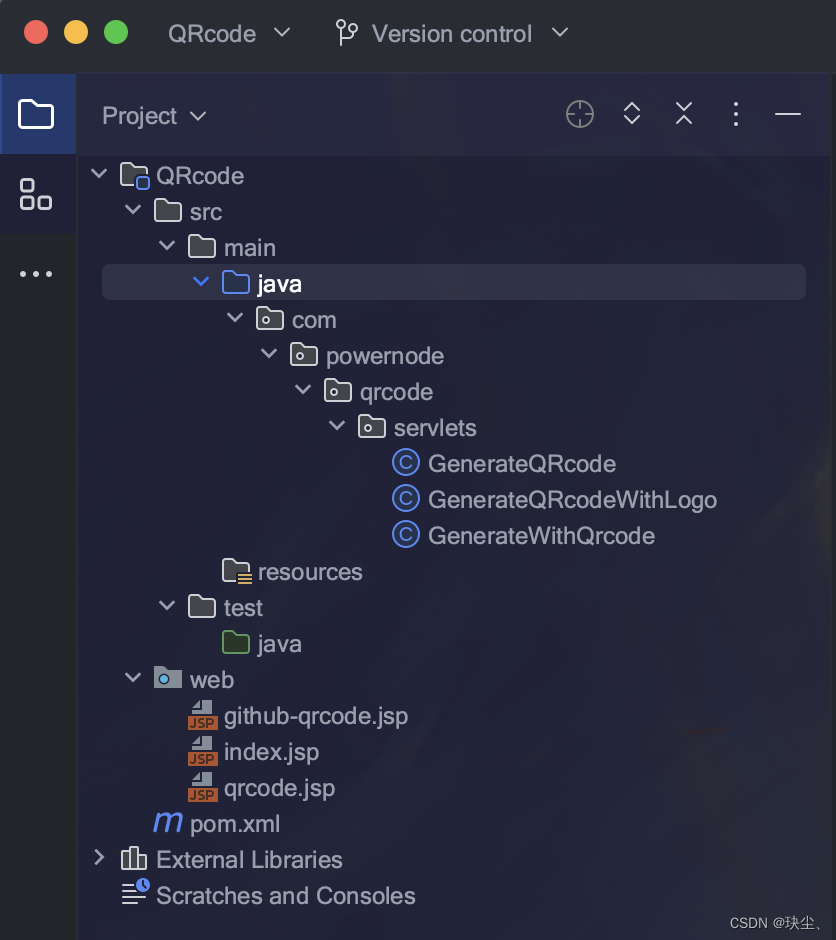
环境搭建
创建Empty Project
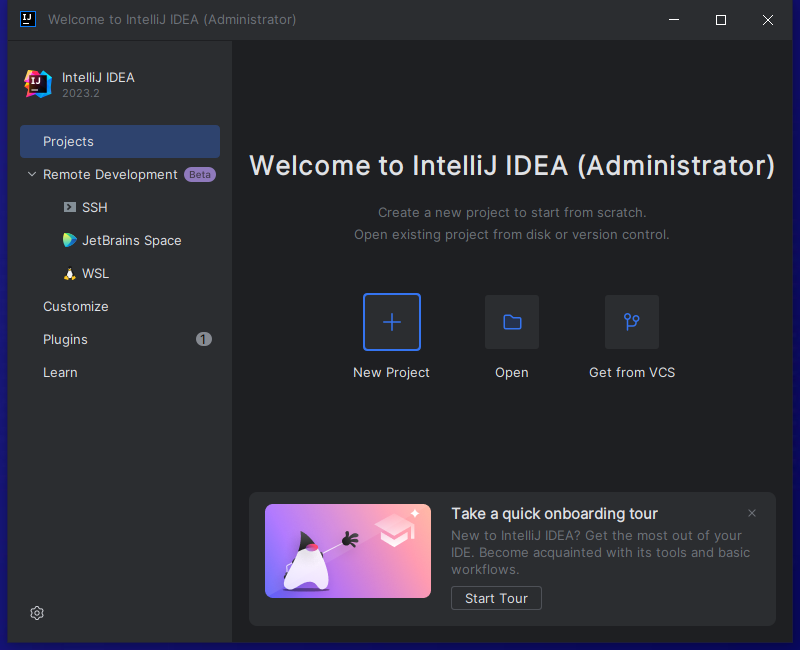
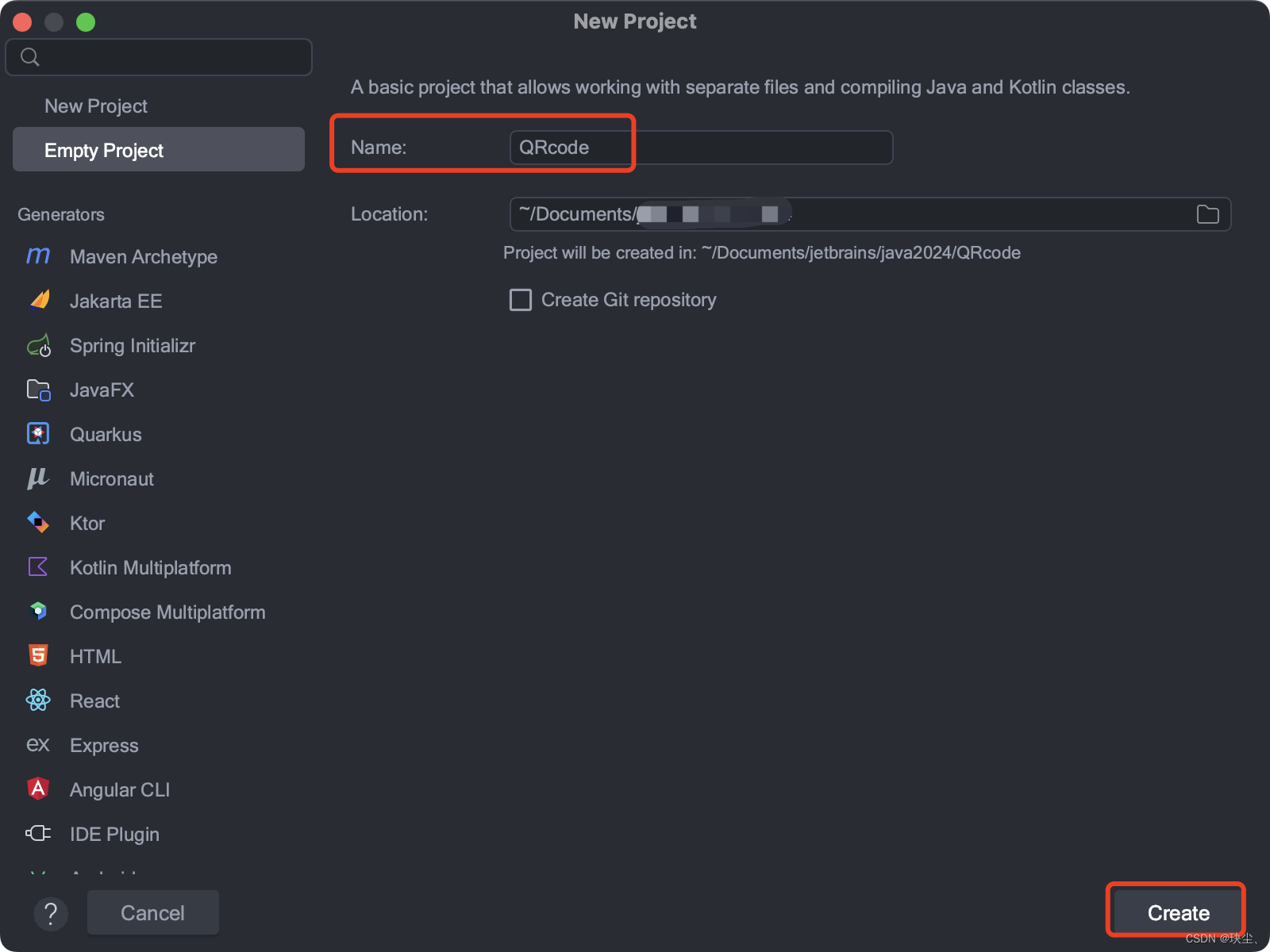

设置SDK
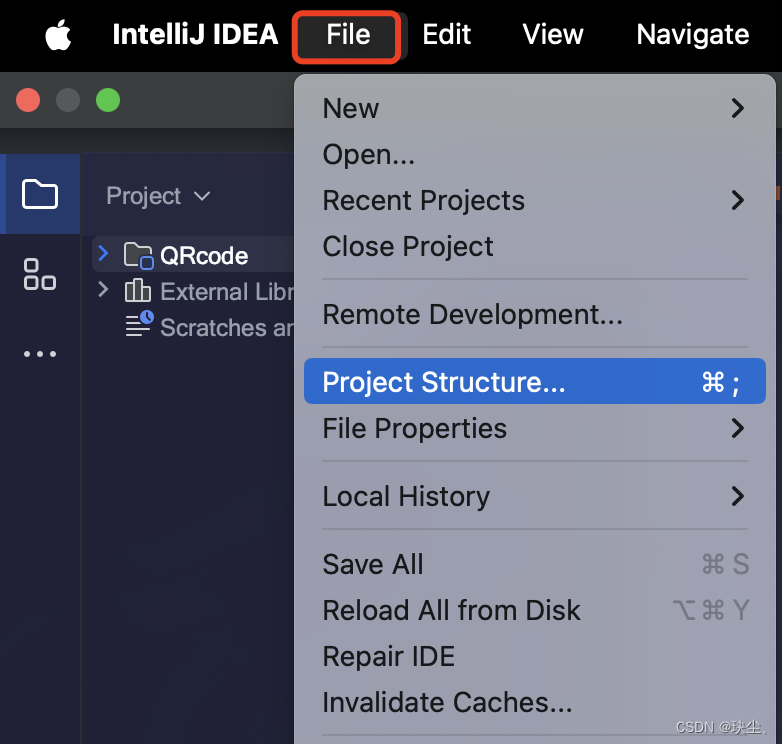
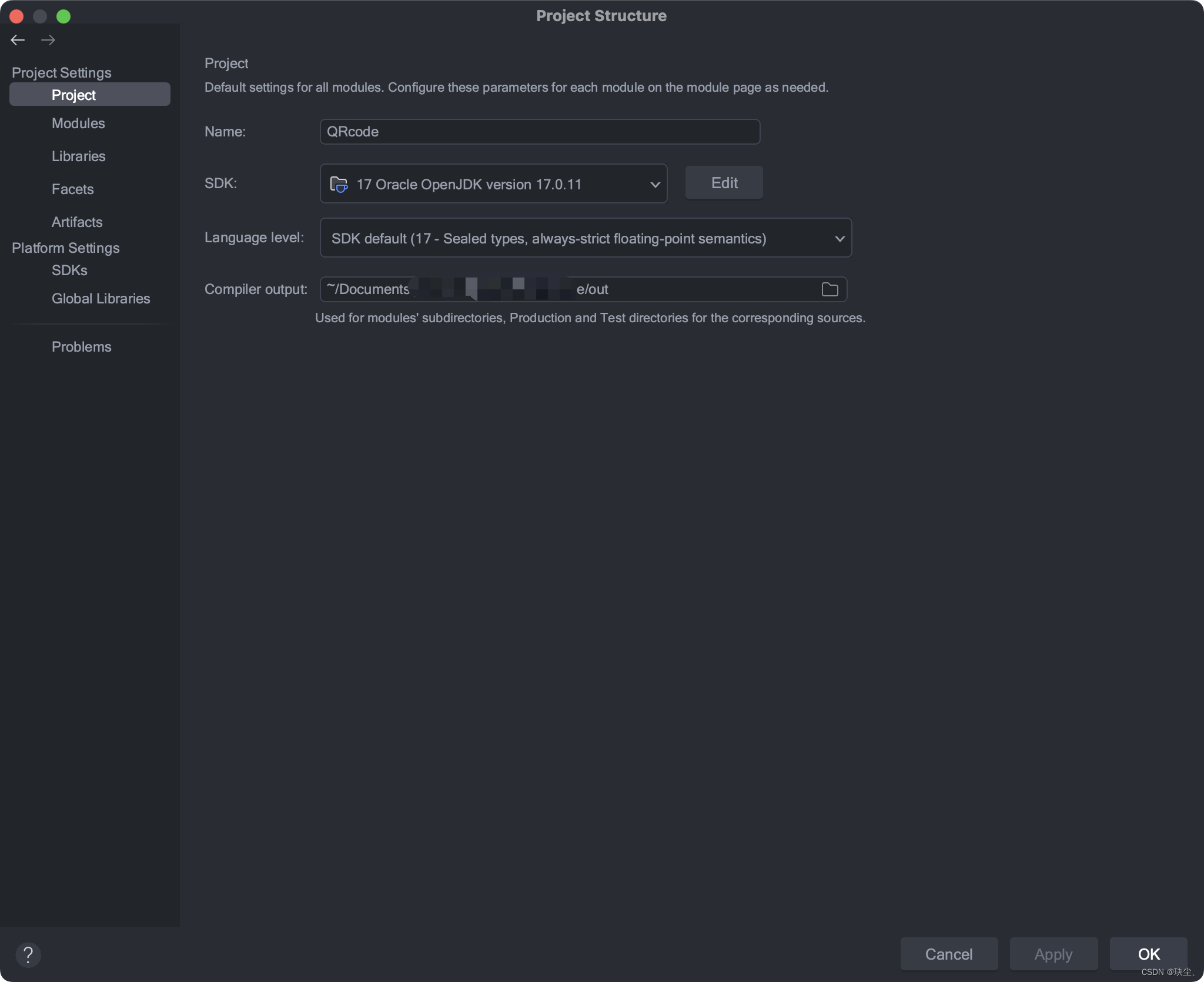
设置Maven
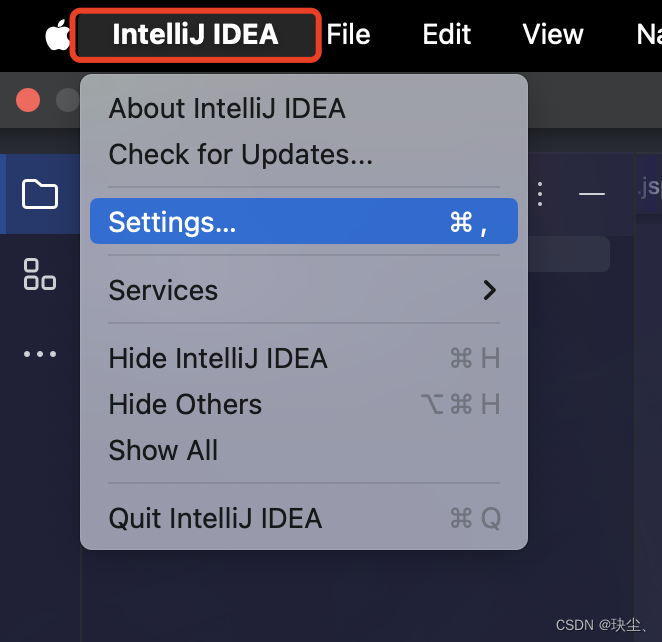
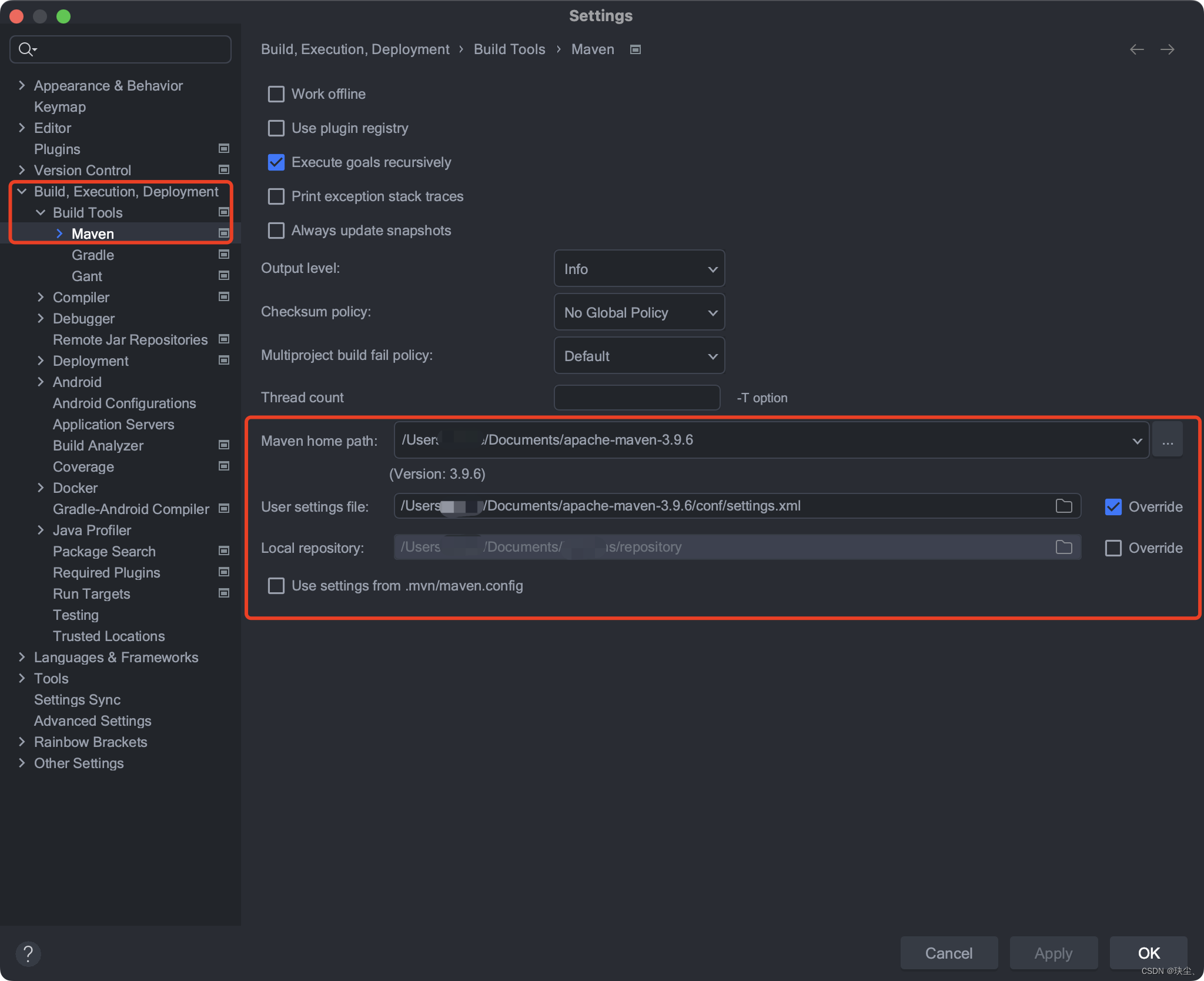
注意:自己安装的maven中settings配置文件中已经配置了本地仓库的位置:
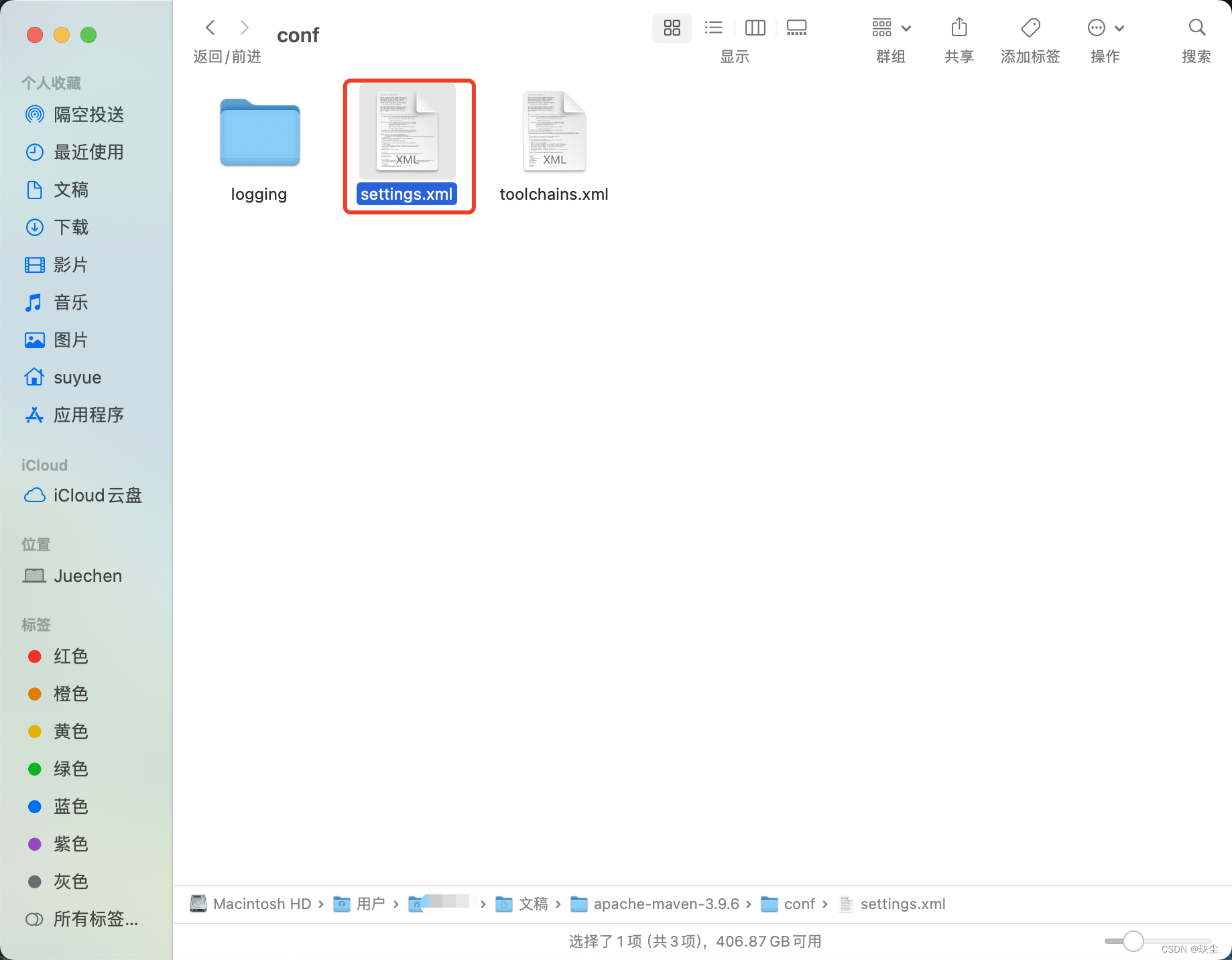
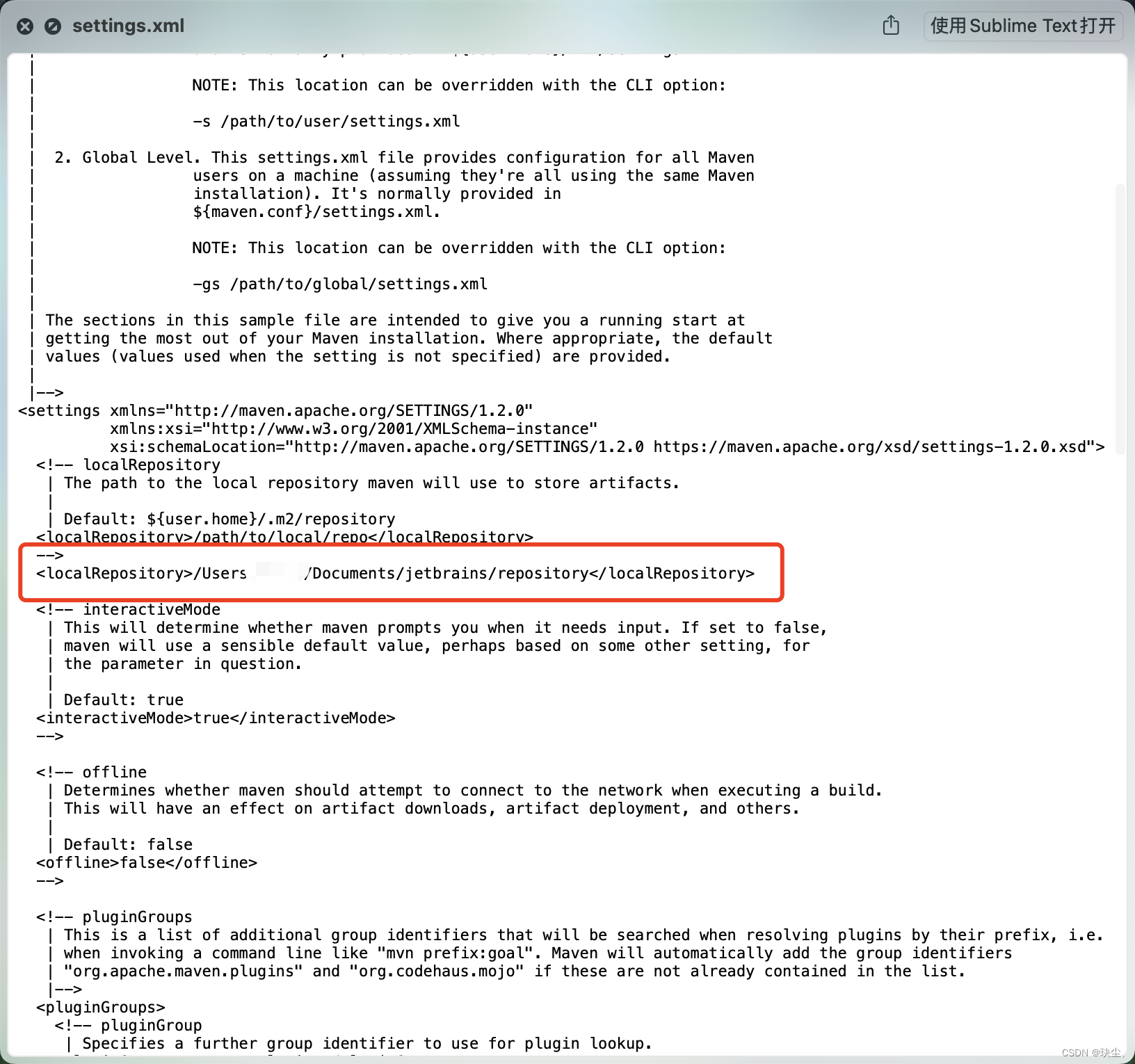
添加web支持
右键项目:
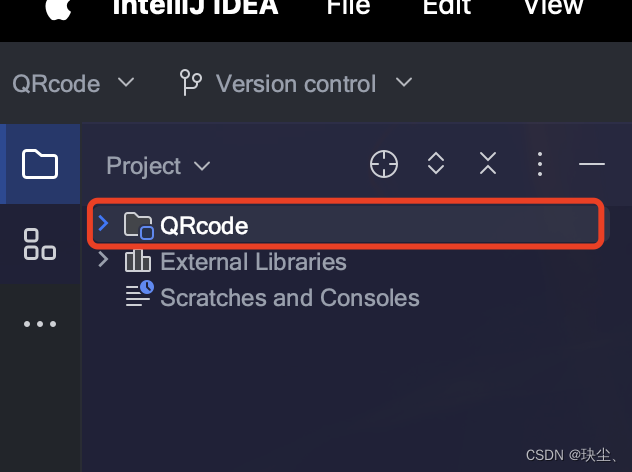
添加框架支持:

注意:如果File菜单中没有上图的“Add Framework Support…”怎么办?
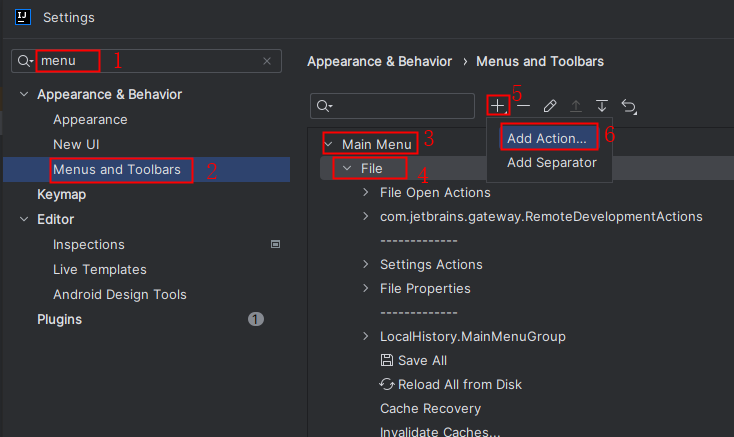
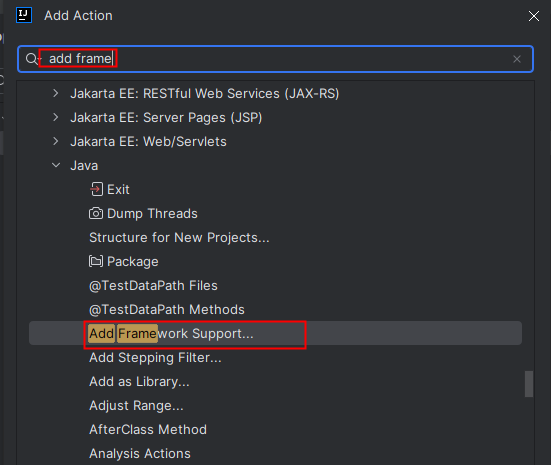
这样File菜单中就有了。
继续添加框架支持:web4.0,不创建web.xml文件
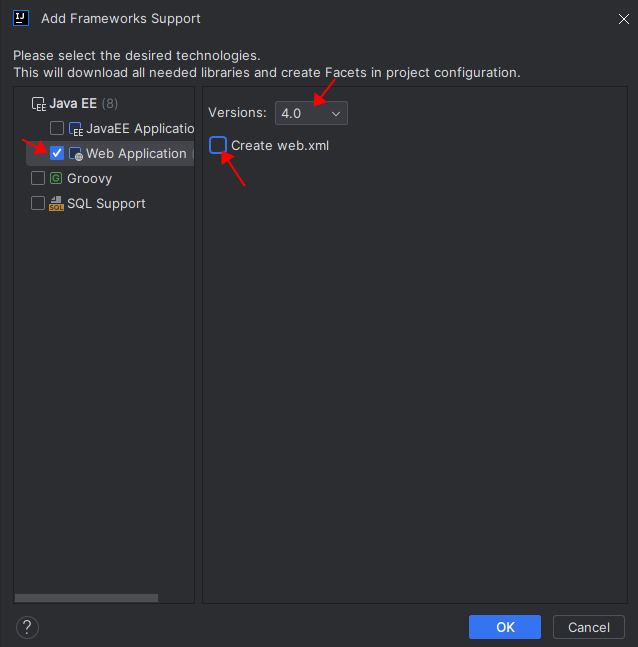
pom.xml文件配置
<?xml version="1.0" encoding="UTF-8"?>
<project xmlns="http://maven.apache.org/POM/4.0.0"
xmlns:xsi="http://www.w3.org/2001/XMLSchema-instance"
xsi:schemaLocation="http://maven.apache.org/POM/4.0.0 http://maven.apache.org/xsd/maven-4.0.0.xsd">
<modelVersion>4.0.0</modelVersion>
<groupId>com.powernode</groupId>
<artifactId>qrcode</artifactId>
<version>1.0-SNAPSHOT</version>
<packaging>war</packaging>
<dependencies>
<dependency>
<groupId>jakarta.servlet</groupId>
<artifactId>jakarta.servlet-api</artifactId>
<version>6.0.0</version>
<scope>provided</scope>
</dependency>
</dependencies>
<properties>
<maven.compiler.source>17</maven.compiler.source>
<maven.compiler.target>17</maven.compiler.target>
<project.build.sourceEncoding>UTF-8</project.build.sourceEncoding>
</properties>
</project>
- 打包方式:war
- 引入servlet依赖
确认web的根是否正确(重点)

设置tomcat并部署应用

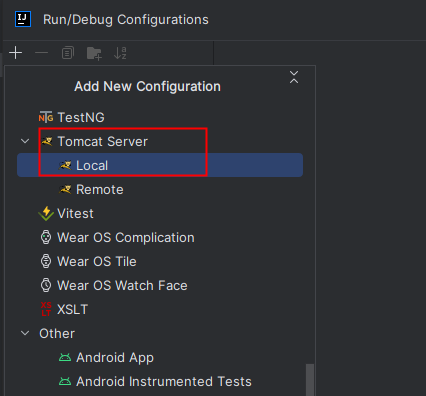
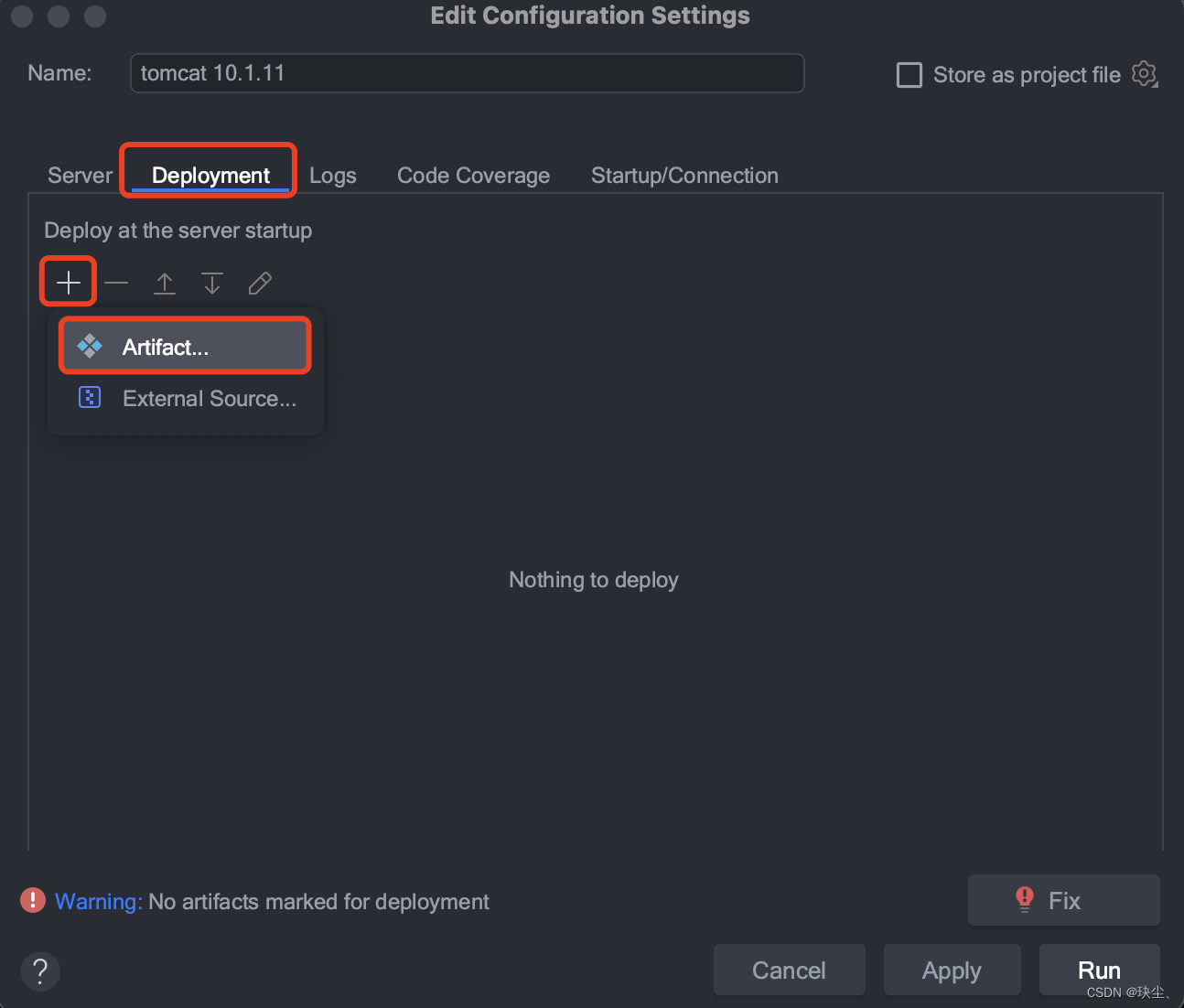
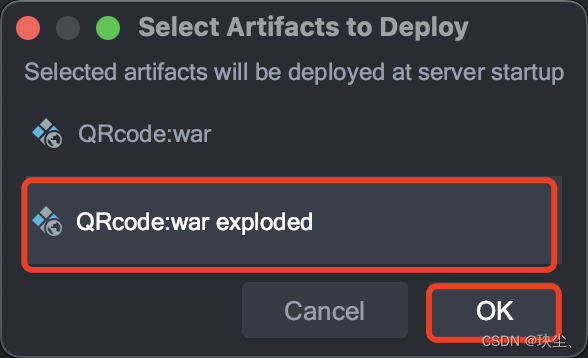
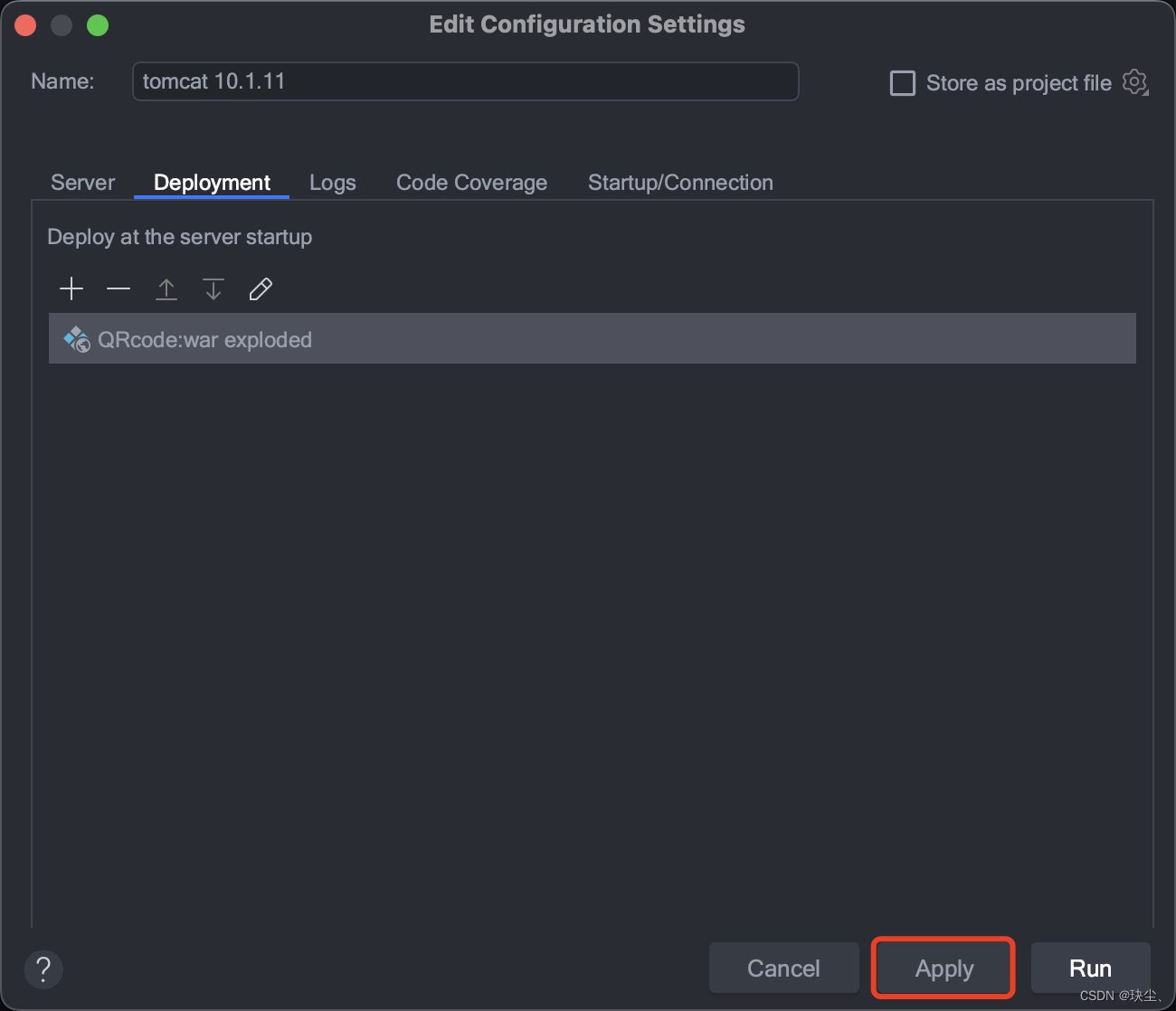
这个地方可能有些小伙伴还没有安装tomcat,mac推荐使用homebrew安装tomcat!

然后这个Configure这里,需要我们自己去找:
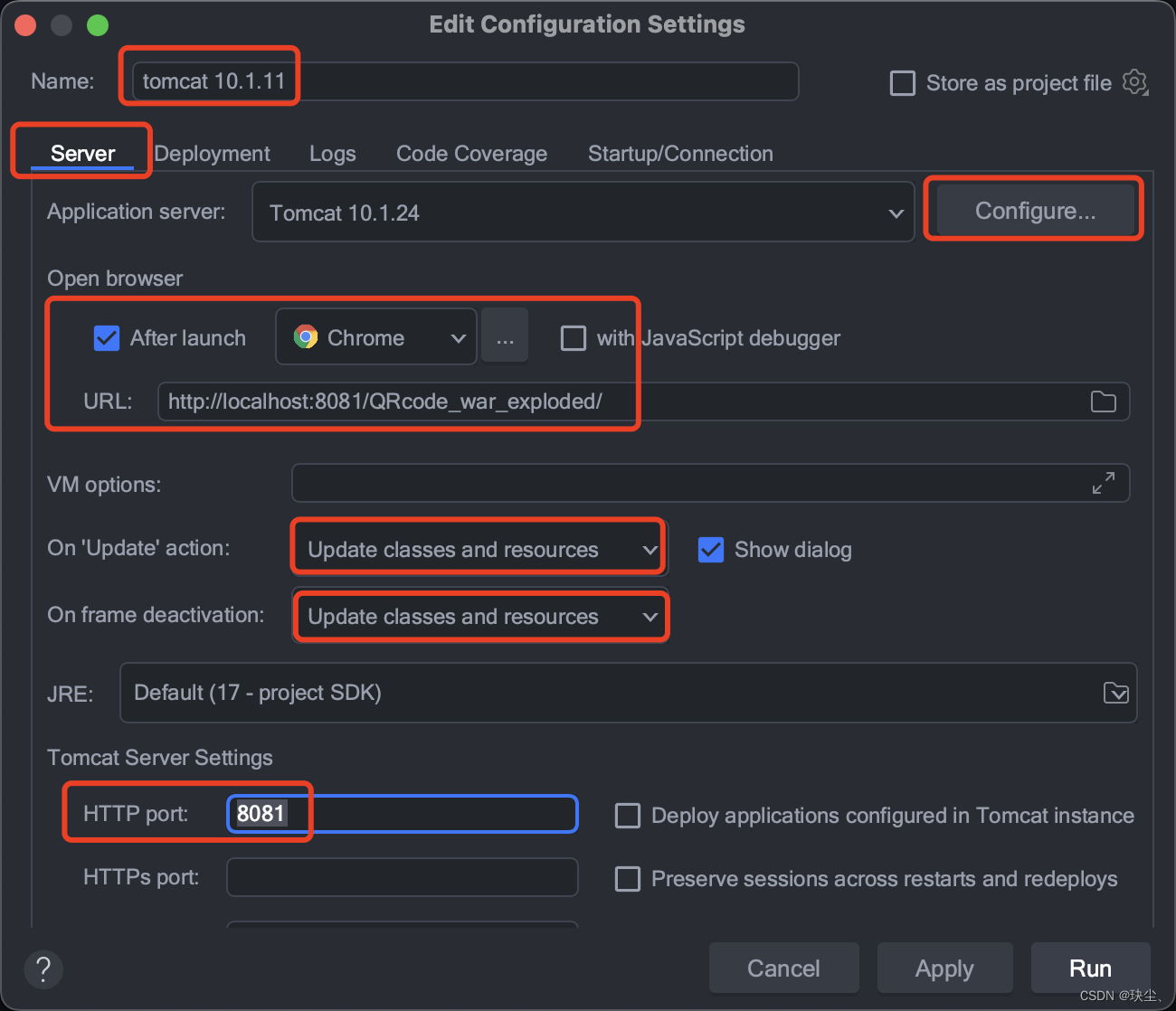
在终端输入以获取tomcat路径:
brew ls tomcat
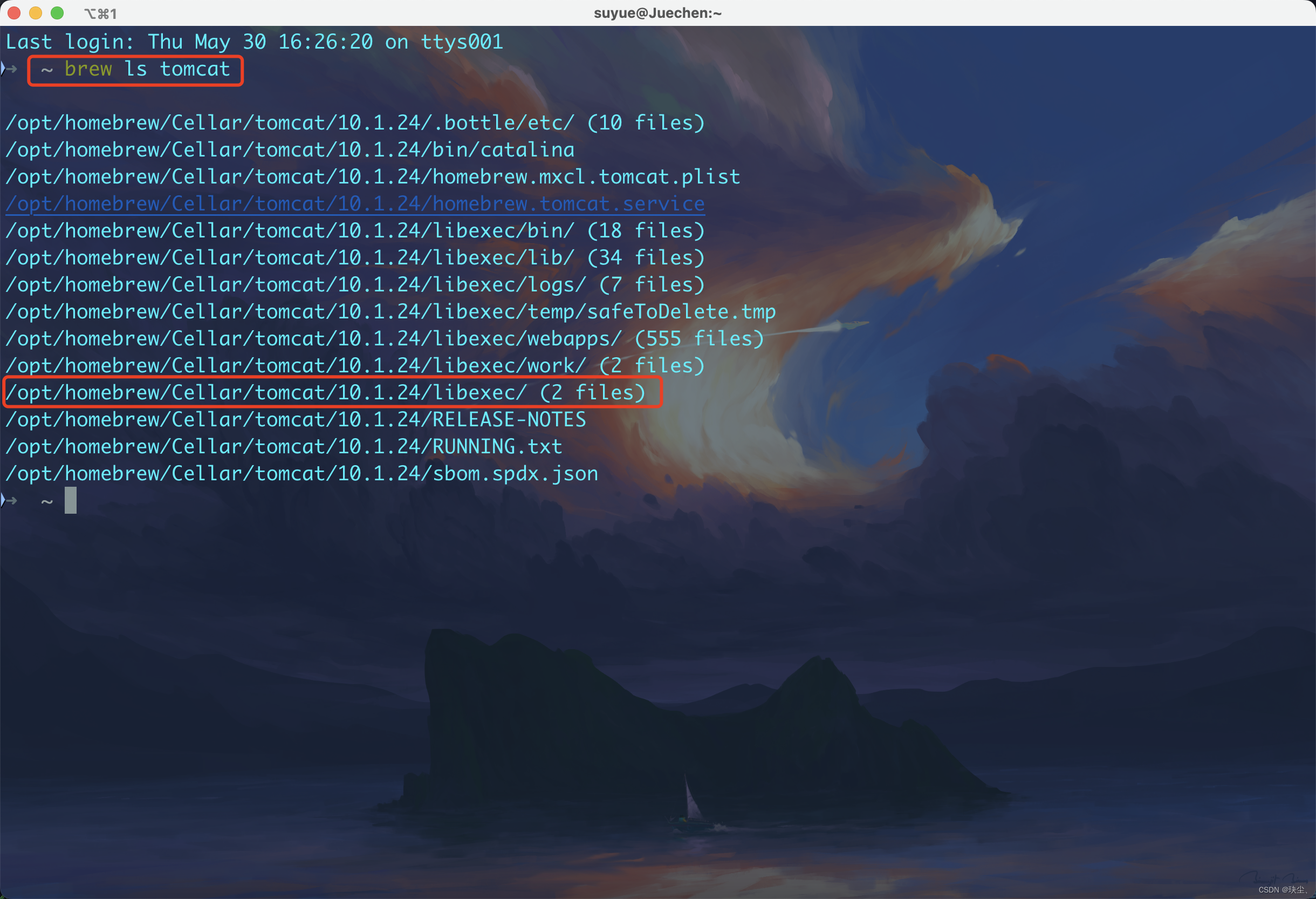
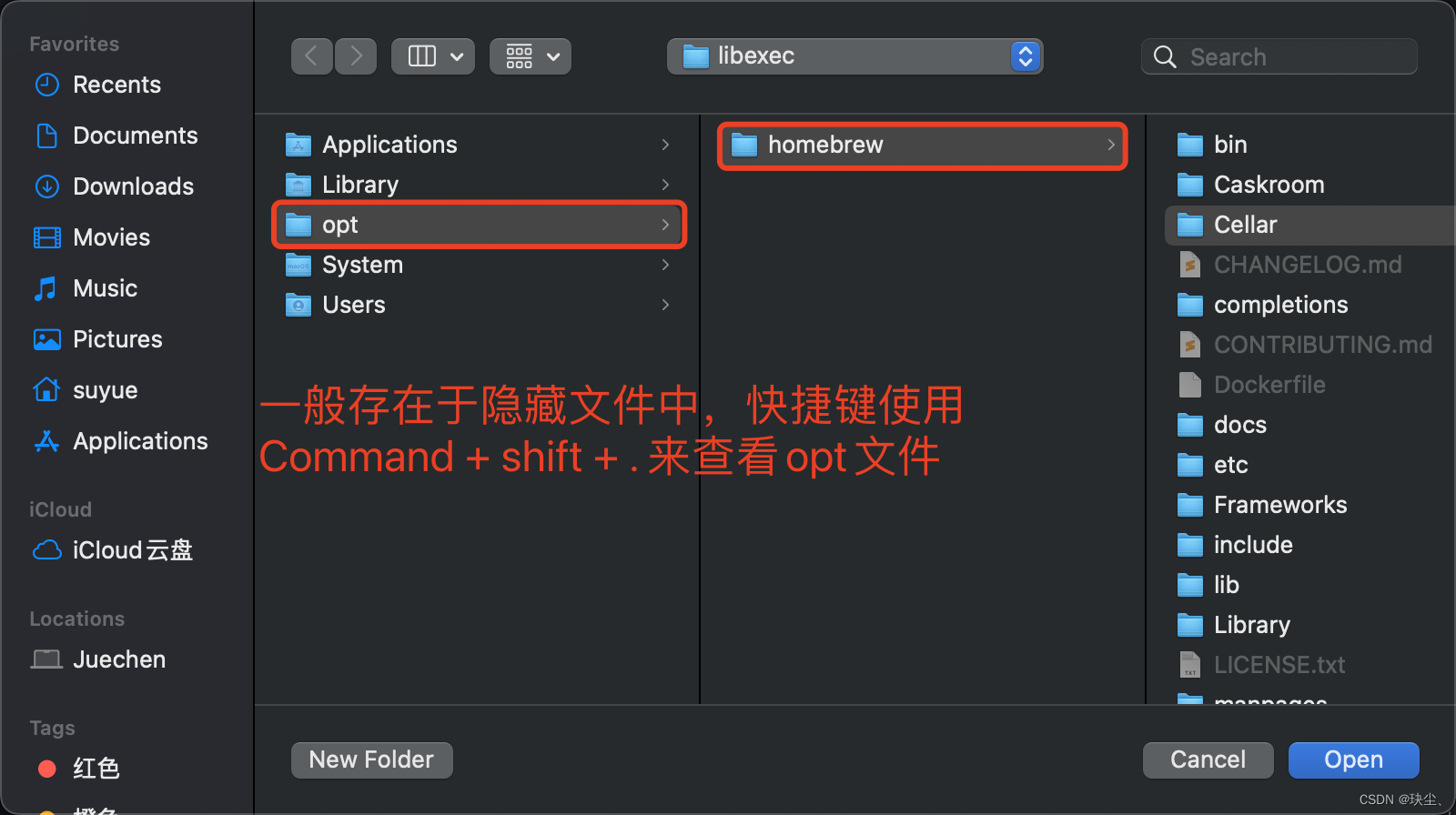
然后依次按照所给tomcat路径去找到自己的tomcat!
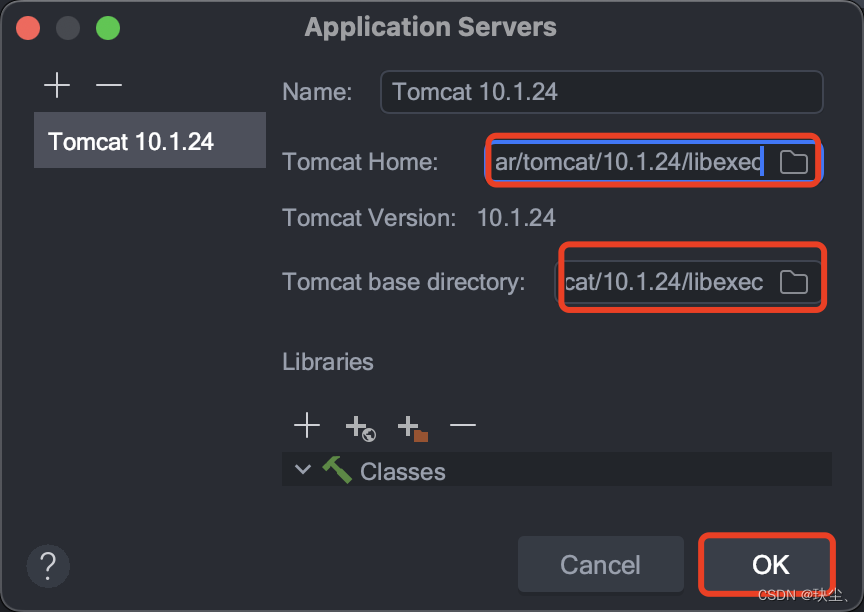
启动tomcat并访问
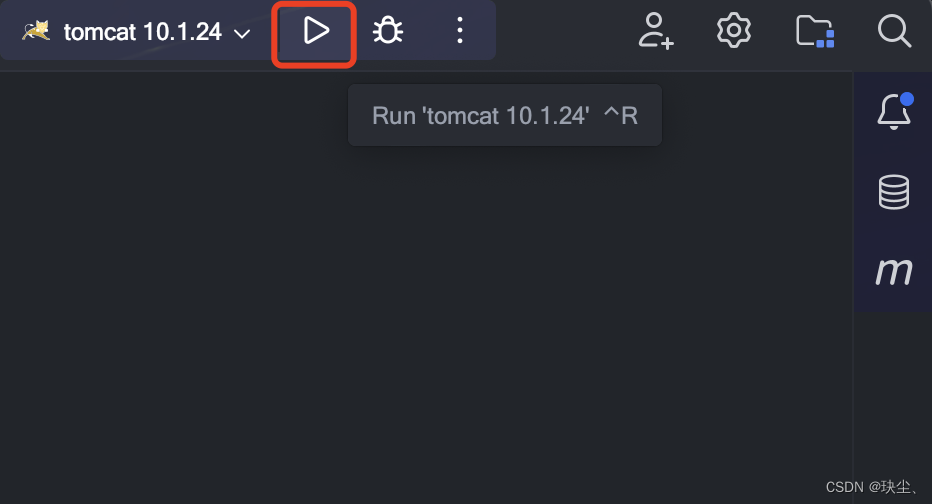

zxing相关依赖
<!--zxing依赖-->
<dependency>
<groupId>com.google.zxing</groupId>
<artifactId>core</artifactId>
<version>3.1.0</version>
</dependency>
<dependency>
<groupId>com.google.zxing</groupId>
<artifactId>javase</artifactId>
<version>3.1.0</version>
</dependency>
<!--commons-lang依赖-->
<dependency>
<groupId>commons-lang</groupId>
<artifactId>commons-lang</artifactId>
<version>2.6</version>
</dependency>
zxing常用API
EncodeHintType(编码提示类型)
EncodeHintType是用来设置二维码编码时的一些额外参数的枚举类型,常用枚举值如下:
ERROR_CORRECTION:- 误差校正级别。对于黑白二维码,可选值为
L(7%)、M(15%)、Q(25%)、H(30%),表示二维码允许破损的最大容错率。在二维码出现破损时,根据设置的容错率级别,可以尝试修复二维码中的一些数据。 - 二维码在生成过程中,可能会出现一些损坏或者缺失的情况,例如打印时墨水耗尽、图像压缩、摄像头拍摄角度不对等。这些问题可能导致二维码无法完全识别,或者识别出来的数据不准确,而误差校正码就是为了解决这些问题而产生的。
- 例如,选择L级别的容错率,相当于允许在二维码的整体颜色区域中,最多可有约7%的坏像素点;而选择H级别的容错率时,最多可有约30%的坏像素点。
- 注意:误差校正级别的具体值需要通过ErrorCorrectionLevel的枚举值来获取。
- 误差校正级别。对于黑白二维码,可选值为
CHARACTER_SET:- 编码字符集。可以设置使用的字符编码,例如utf-8、gb2312等等。
MARGIN:- 二维码的空白区域大小。可以设置二维码周围的留白大小,以便于在不同的嵌入场景中使用二维码。
MultiFormatWriter(多格式写入程序)
MultiFormatWriter是一个便捷的二维码生成类,可以根据传入的BarcodeFormat参数,生成对应类型的二维码。
MultiFormatWriter封装了一系列的二维码生成方法,可以生成多种格式的二维码,包括QR Code、Aztec Code、PDF417、Data Matrix等。
BarcodeFormat(码格式)
BarcodeFormat是枚举类,通过它来制定二维码格式:
- QR Code :QR Code是最常见的二维码格式之一,广泛应用于商品包装、票务、扫码支付等领域。QR Code矩阵有黑白两种颜色,其中黑色部分表示信息的编码,白色部分则用于衬托和辨识。
- Aztec Code:Aztec Code是一种高密度、可靠性很高的二维码格式。相比于其他二维码格式,它具有更低的容错率、更小的尺寸和更高的解码效率。因此,它适合用于储存一些核心信息,例如个人信息、证件信息、账户密码等。
- PDF417:是一种可以储存大量信息的二维码格式,它具有数据密度高、可靠性强等优点,可以应用于许多场景,例如航空机票,运输和配送标签,法律文件等。
- Data Matrix:是一种小巧的二维码格式,它的编码方式类似于QR Code,但是其可靠性、识别率、扫描速度和牢固度都比QR Code更优秀。由于尺寸较小、可靠性较高,因此Data Matrix适合嵌入简单的产品标签、医疗图像、检测数据等领域。
BitMatrix(位矩阵)
BitMatrix是ZXing库中表示二维码矩阵的数据结构,它是由0和1构成的二维数组,用于存储二维码的编码信息。在二维码生成过程中,我们通过对BitMatrix对象的构建和操作,最终生成一个可被扫描解码的二维码图像。
BitMatrix实际上是一个紧凑型的布尔型二维数组,往往只需要占用一个字节即可表示8位二进制。在使用BitMatrix时,我们可以通过其不同的方法,例如get()、set()等,来获取、设置矩阵中每个位置的值。
在ZXing中,BitMatrix常用于将编码后的信息转化为矩阵形式,并进行图像的生成和输出。在使用ZXing生成二维码时,我们首先需要使用MultiFormatWriter.encode()方法来生成一个BitMatrix;然后,在对BitMatrix进行各种处理和操作后,就可以在UI中显示和输出二维码。
总的来说,BitMatrix是ZXing库中非常重要的数据结构之一,它负责存储和处理生成二维码图像所需的二进制信息,是实现二维码生成功能的关键。
BitMatrix常用API:
- getHeight():获取矩阵高度
- getWidth():获取矩阵宽度
- get(x, y):根据x,y的坐标获取矩阵中该坐标的值。结果是true(黑色)或者false(白色)。
生成普通黑白二维码
前端代码:
<%--
Created by IntelliJ IDEA.
User: suyue
Date: 2024/5/30
Time: 16:21
To change this template use File | Settings | File Templates.
--%>
<%@ page contentType="text/html;charset=UTF-8" language="java" %>
<html>
<head>
<title>使用JAVA语言生成二维码</title>
</head>
<body>
<h1>使用Google的zxing二维码生成工具生成普通的黑白二维码</h1>
<hr />
请输入文本内容:<input type="text" id="url"/>
<button onclick="generateQRcode()">生成二维码</button><br/>
<hr />
<img src="" id="qrcodeimg" />
<script>
function generateQRcode() {
let url = document.getElementById("url").value
let QRCode = document.getElementById("qrcodeimg");
QRCode.src = "/QRcode/generate?url=" + url;
}
</script>
</body>
</html>
后端代码:
package com.powernode.qrcode.servlets;
import com.google.zxing.BarcodeFormat;
import com.google.zxing.EncodeHintType;
import com.google.zxing.MultiFormatWriter;
import com.google.zxing.common.BitMatrix;
import com.google.zxing.qrcode.decoder.ErrorCorrectionLevel;
import jakarta.servlet.ServletException;
import jakarta.servlet.ServletOutputStream;
import jakarta.servlet.annotation.WebServlet;
import jakarta.servlet.http.HttpServlet;
import jakarta.servlet.http.HttpServletRequest;
import jakarta.servlet.http.HttpServletResponse;
import javax.imageio.ImageIO;
import java.awt.image.BufferedImage;
import java.io.IOException;
import java.util.HashMap;
import java.util.Map;
@WebServlet("/generate")
public class GenerateQRcode extends HttpServlet {
@Override
protected void doGet(HttpServletRequest req, HttpServletResponse resp) throws ServletException, IOException {
doPost(req, resp);
}
@Override
protected void doPost(HttpServletRequest request, HttpServletResponse response)
throws ServletException, IOException {
try {
// 准备一个Map集合,用来存储二维码图片的相关属性
Map map = new HashMap();
// 设置误差校验级别
map.put(EncodeHintType.ERROR_CORRECTION, ErrorCorrectionLevel.H);
// 设置字符编码(因为文本内容要转换成二维码,需要指定转换时采用的字符集)
map.put(EncodeHintType.CHARACTER_SET, "utf-8");
// 设置二维码的外边距
map.put(EncodeHintType.MARGIN, 1);
// 获取要生成二维码的文本内容
String url = request.getParameter("url");
// 创建MultiFormatWriter对象
MultiFormatWriter writer = new MultiFormatWriter();
// 传入:内容、码的格式、宽度、高度、二维码参数。返回位矩阵对象。
BitMatrix bitMatrix = writer.encode(url, BarcodeFormat.QR_CODE, 300, 300, map);
// 获取位矩阵的宽度和高度
int width = bitMatrix.getWidth();
int height = bitMatrix.getHeight();
// 创建BufferedImage对象
BufferedImage image = new BufferedImage(width, height, BufferedImage.TYPE_INT_RGB);
// 遍历位矩阵
for (int x = 0; x < width; x++) {
for (int y = 0; y < height; y++) {
// 0xFF000000 黑色
// 0xFFFFFFFF 白色
image.setRGB(x, y, bitMatrix.get(x, y) ? 0xFF000000 : 0xFFFFFFFF);
}
}
// 响应
ServletOutputStream out = response.getOutputStream();
ImageIO.write(image, "png", out);
out.flush();
out.close();
} catch(Exception e){
e.printStackTrace();
}
}
}
运行效果:
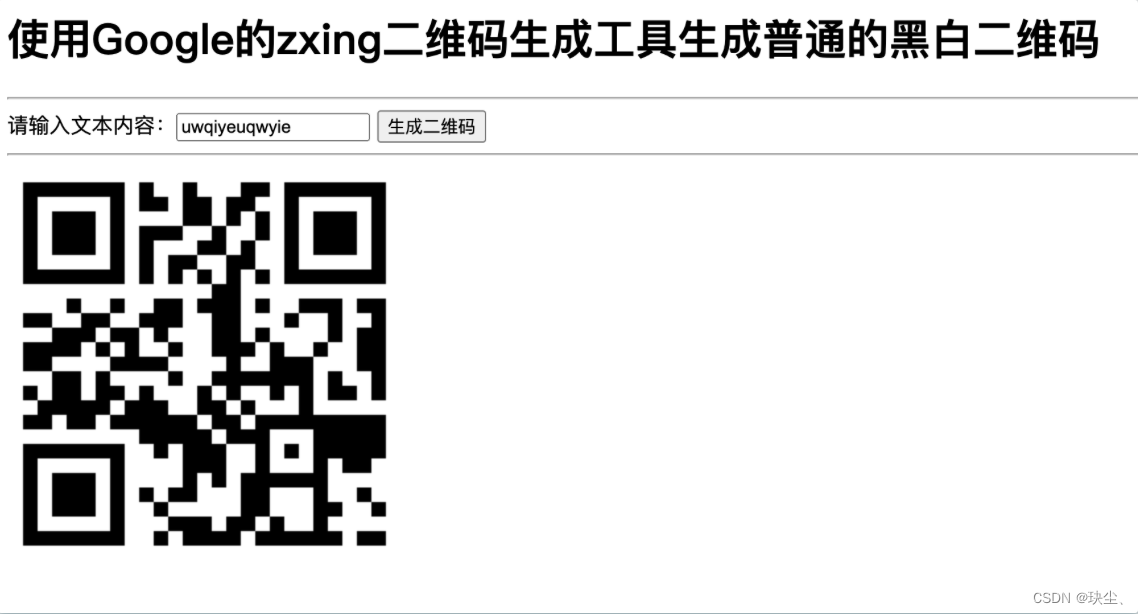
生成一个带logo的黑白二维码
<%@page contentType="text/html;charset=UTF-8" pageEncoding="UTF-8" %>
<!doctype html>
<html>
<head>
<title>生成带有logo的黑白二维码</title>
<meta charset="UTF-8">
</head>
<body>
<form action="/myqrcode/generateWithLogo" method="post" enctype="multipart/form-data">
请输入文本内容:<input type="text" name="url"><br>
请选择图片:<input type="file" name="logo"><br>
<input type="submit" value="生成带有logo的二维码"/>
</form>
</body>
</html>
package com.powernode.qrcode.servlets;
import com.google.zxing.BarcodeFormat;
import com.google.zxing.EncodeHintType;
import com.google.zxing.MultiFormatWriter;
import com.google.zxing.common.BitMatrix;
import com.google.zxing.qrcode.decoder.ErrorCorrectionLevel;
import jakarta.servlet.ServletException;
import jakarta.servlet.annotation.MultipartConfig;
import jakarta.servlet.annotation.WebServlet;
import jakarta.servlet.http.HttpServlet;
import jakarta.servlet.http.HttpServletRequest;
import jakarta.servlet.http.HttpServletResponse;
import jakarta.servlet.http.Part;
import javax.imageio.ImageIO;
import java.awt.*;
import java.awt.geom.RoundRectangle2D;
import java.awt.image.BufferedImage;
import java.io.IOException;
import java.io.InputStream;
import java.util.HashMap;
import java.util.Map;
@WebServlet("/generateWithLogo")
@MultipartConfig(fileSizeThreshold = 1024 * 1024 * 2, maxFileSize = 1024 * 1024 * 10, maxRequestSize = 1024 * 1024 * 100)
public class GenerateQrCodeWithLogo extends HttpServlet {
protected void doPost(HttpServletRequest request, HttpServletResponse response) throws ServletException, IOException {
try {
// 准备一个Map集合,用来存放二维码的属性
Map map = new HashMap();
map.put(EncodeHintType.ERROR_CORRECTION, ErrorCorrectionLevel.H);
map.put(EncodeHintType.CHARACTER_SET, "UTF-8");
map.put(EncodeHintType.MARGIN, 1);
// 获取文本内容
String url = request.getParameter("url");
// 创建zxing核心对象
MultiFormatWriter writer = new MultiFormatWriter();
BitMatrix bitMatrix = writer.encode(url, BarcodeFormat.QR_CODE, 300, 300, map);
int width = bitMatrix.getWidth();
int height = bitMatrix.getHeight();
// 生成二维码
BufferedImage bufferedImage = new BufferedImage(width, height, BufferedImage.TYPE_INT_RGB);
for (int x = 0; x < width; x++) {
for (int y = 0; y < height; y++) {
bufferedImage.setRGB(x, y, bitMatrix.get(x, y) ? 0xFF000000 : 0xFFFFFFFF);
}
}
// 给二维码添加logo
// 第一部分:将logo缩放。
// 获取上传的logo Part对象
Part logo = request.getPart("logo");
// 通过Part对象获取输入流
InputStream inputStream = logo.getInputStream();
// 通过ImageIO的read方法,从输入流中读取,从而获得logo图片
Image logoImage = ImageIO.read(inputStream);
// 获取logo图片的宽度
int logoWidth = logoImage.getWidth(null);
// 获取logo图片的高度
int logoHeight = logoImage.getHeight(null);
// 如果logo的宽度或者高度大于100,则重新赋值100
if (logoWidth > 60) {
logoWidth = 60;
}
if (logoHeight > 60) {
logoHeight = 60;
}
// 使用平滑缩放算法对原logo图像进行缩放得到一个全新的图像。
Image scaledLogo = logoImage.getScaledInstance(logoWidth, logoHeight, Image.SCALE_SMOOTH);
// 第二部分:将缩放后的logo画到黑白二维码上
// 获取2D画笔
Graphics2D graphics2D = bufferedImage.createGraphics();
// 开始画的x和y坐标
int x = (300 - logoWidth) / 2;
int y = (300 - logoHeight) / 2;
// 将缩放后的logo画上去
graphics2D.drawImage(scaledLogo, x, y, null);
// 创建一个具有指定位置、宽度、高度和圆角半径的圆角矩形。这个圆角矩形是用来绘制边框的。
Shape shape = new RoundRectangle2D.Float(x, y, logoWidth, logoHeight, 10, 10);
// 使用一个宽度为4像素的基本笔触
graphics2D.setStroke(new BasicStroke(4f));
// 给logo画圆角矩形
graphics2D.draw(shape);
// 释放画笔
graphics2D.dispose();
// 响应
ImageIO.write(bufferedImage, "png", response.getOutputStream());
} catch (Exception e) {
e.printStackTrace();
}
}
}
运行效果:
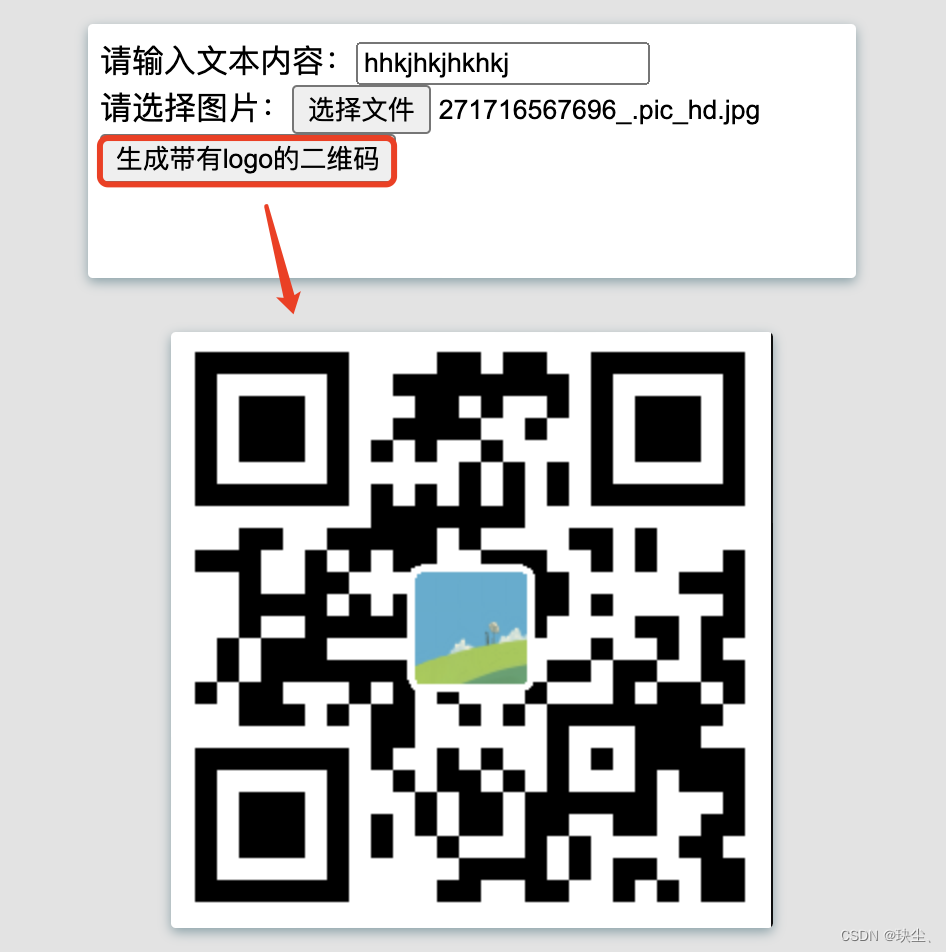
使用github开源项目qrcode
<dependency>
<groupId>com.github.liuyueyi.media</groupId>
<artifactId>qrcode-plugin</artifactId>
<version>2.5.2</version>
</dependency>
生成黑白二维码
String url = request.getParameter("url");
BufferedImage image = QrCodeGenWrapper.of(url).asBufferedImage();
ImageIO.write(image, "png", response.getOutputStream());
生成带有logo的二维码
String url = request.getParameter("url");
BufferedImage image = QrCodeGenWrapper.of(url)
.setLogo(request.getPart("logo").getInputStream())
.setLogoRate(7) // 设置 logo 图片与二维码之间的比例。在这个例子中,它设置为 7,表示 logo 的宽度等于二维码的 1/7。
.setLogoStyle(QrCodeOptions.LogoStyle.ROUND) // 设置 logo 图片的样式。设置为 ROUND,表示将 logo 的边框形状设置为圆形。
.asBufferedImage();
ImageIO.write(image, "png", response.getOutputStream());
生成彩色二维码
String url = request.getParameter("url");
BufferedImage image = QrCodeGenWrapper.of(url)
.setDrawPreColor(Color.BLUE)
.asBufferedImage();
ImageIO.write(image, "png", response.getOutputStream());
生成背景图二维码
String url = request.getParameter("url");
BufferedImage image = QrCodeGenWrapper.of(url)
.setBgImg(request.getPart("logo").getInputStream())
.setBgOpacity(0.7F)
.asBufferedImage();
ImageIO.write(image, "png", response.getOutputStream());
特殊形状二维码
String url = request.getParameter("url");
BufferedImage image = QrCodeGenWrapper.of(url)
.setDrawEnableScale(true) // 启用二维码绘制时的缩放功能
.setDrawStyle(QrCodeOptions.DrawStyle.DIAMOND) // 指定绘制样式
.asBufferedImage();
ImageIO.write(image, "png", response.getOutputStream());
图片填充二维码
String url = request.getParameter("url");
BufferedImage image = QrCodeGenWrapper.of(url)
.setErrorCorrection(ErrorCorrectionLevel.H) // 设置二维码的错误纠正级别
.setDrawStyle(QrCodeOptions.DrawStyle.IMAGE) // 绘制样式采用图片填充
.addImg(1, 1, request.getPart("logo").getInputStream()) // 添加图片
.asBufferedImage();
ImageIO.write(image, "png", response.getOutputStream());
生成gif动图二维码
String url = request.getParameter("url");
BufferedImage image = QrCodeGenWrapper.of(url)
.setW(500)
.setH(500)
.setBgImg(request.getPart("logo").getInputStream())
.setBgOpacity(0.6f)
.setPicType("gif")
.asBufferedImage();
ImageIO.write(image, "gif", response.getOutputStream());
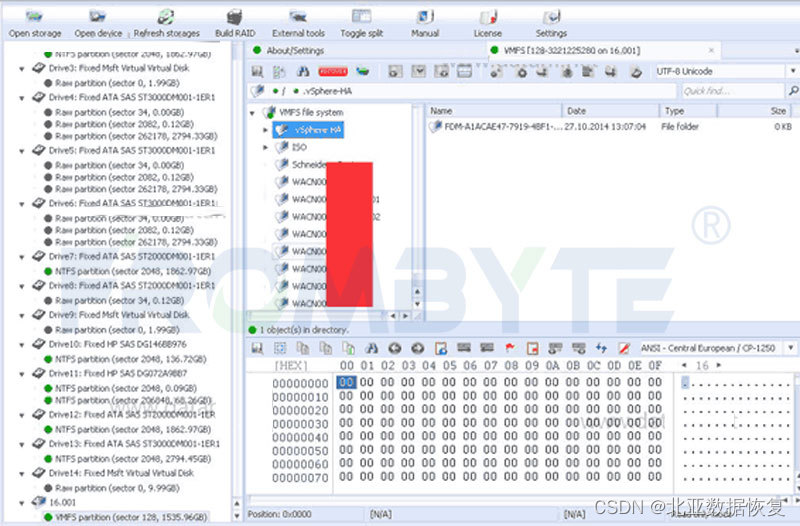
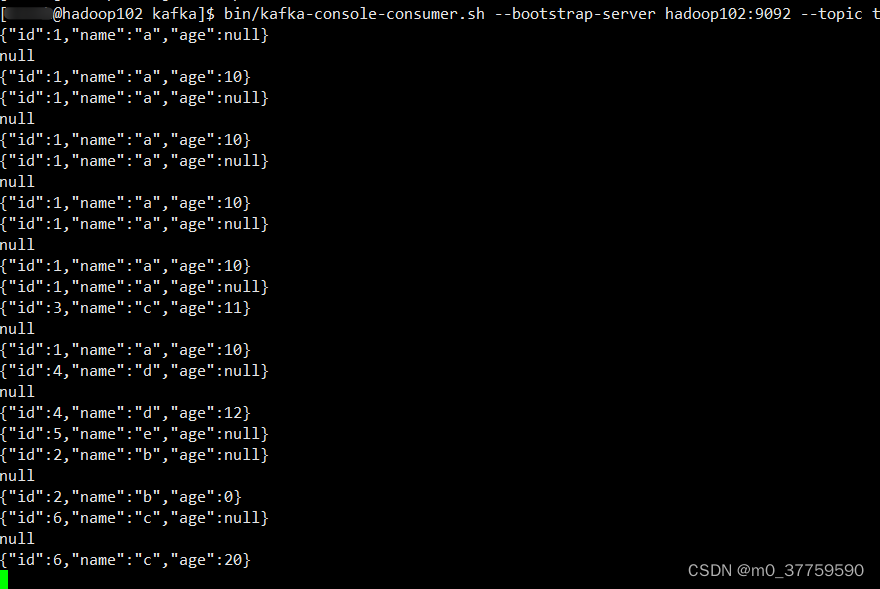


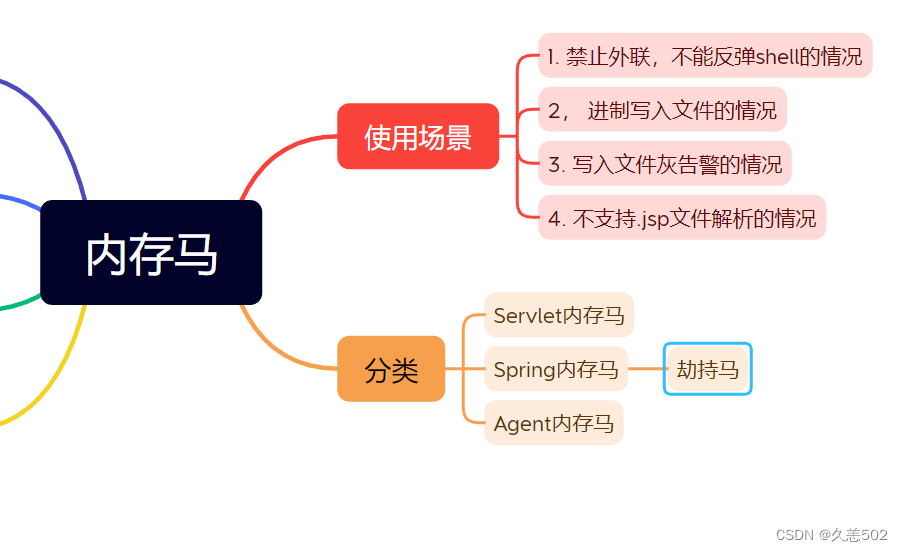

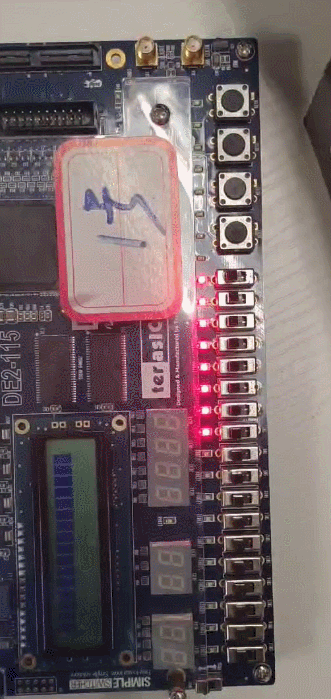

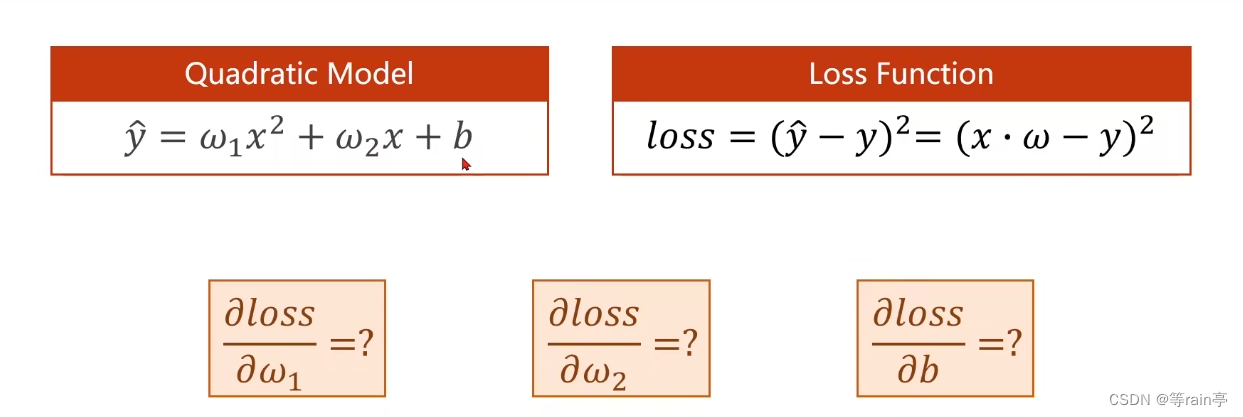
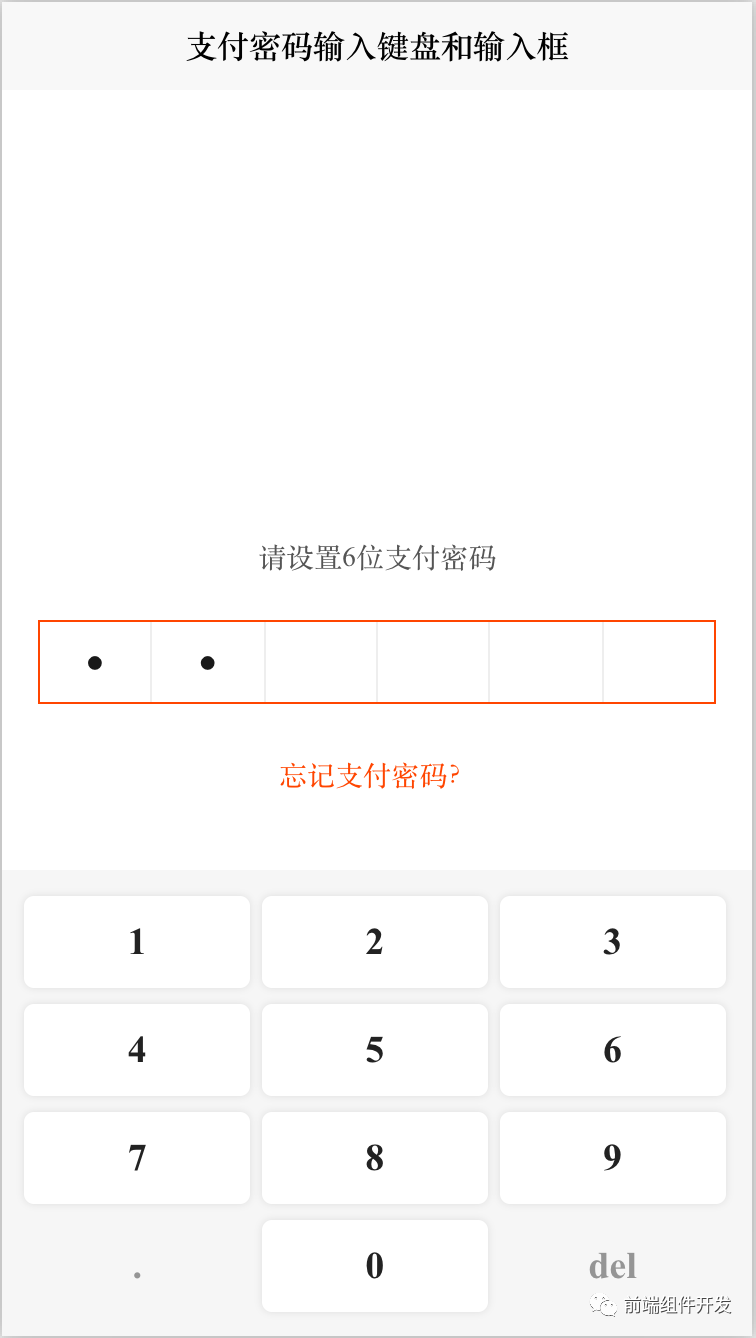
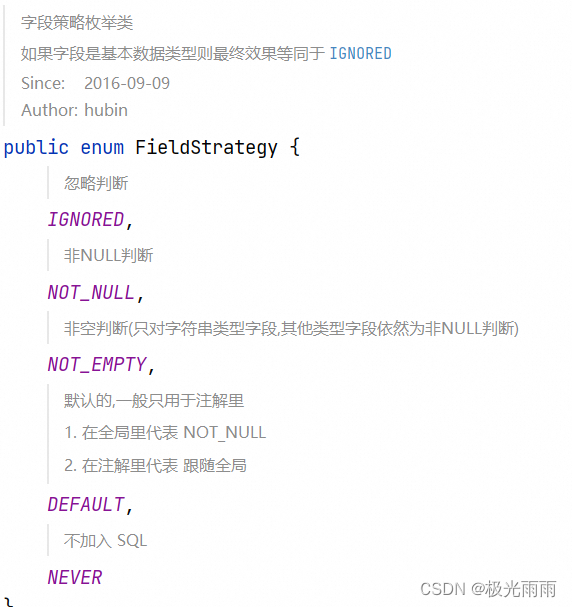

![[ubuntu18.04]搭建mptcp测试环境说明](https://img-blog.csdnimg.cn/direct/62d841f9b74c475ea57e1523925d4a2d.png)
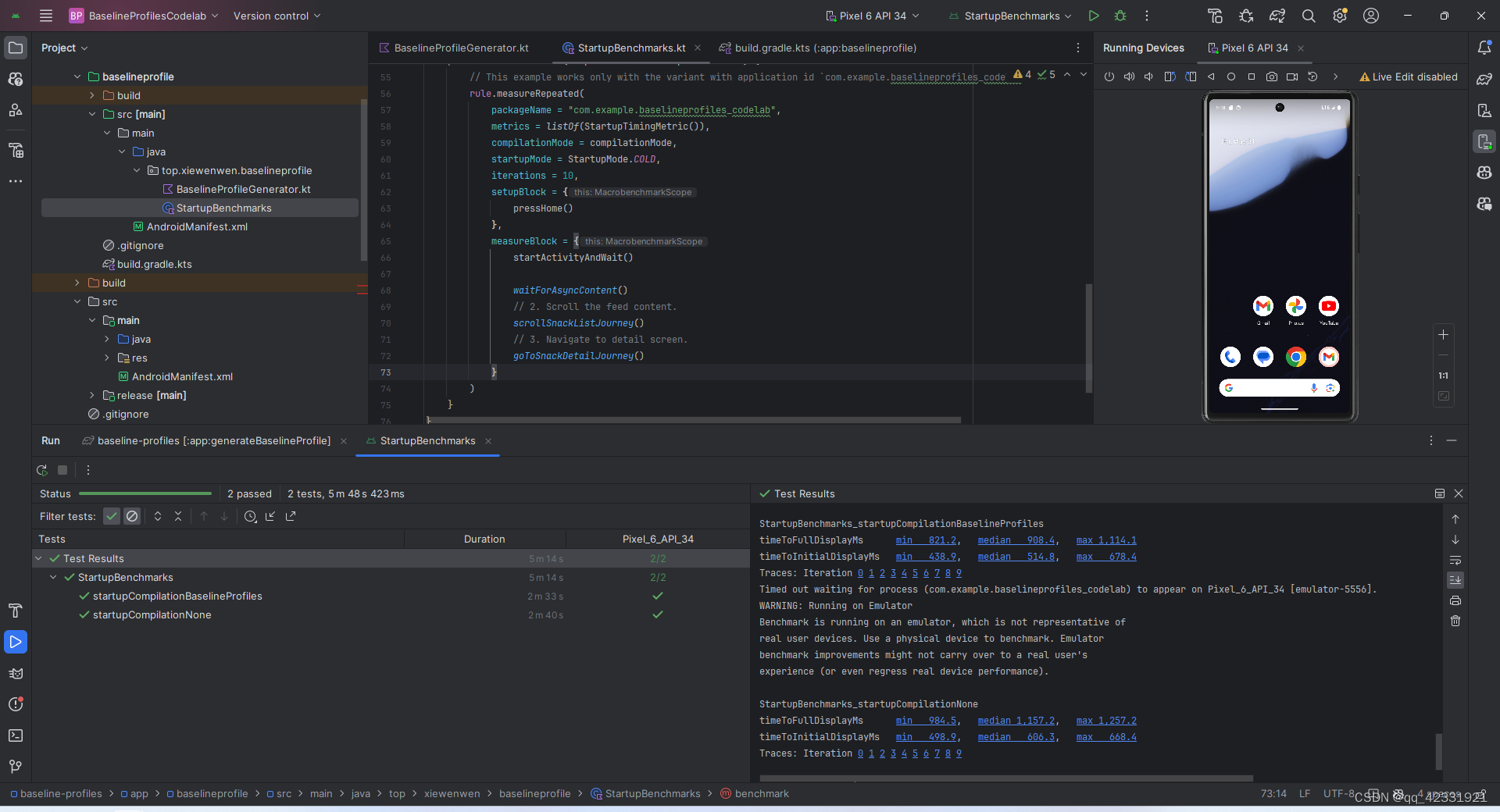
![[Algorithm][动态规划][子序列问题][最长递增子序列的个数][最长数对链]详细讲解](https://img-blog.csdnimg.cn/direct/3f72388e276f46ffbccf4e1daf8b31fc.png)



